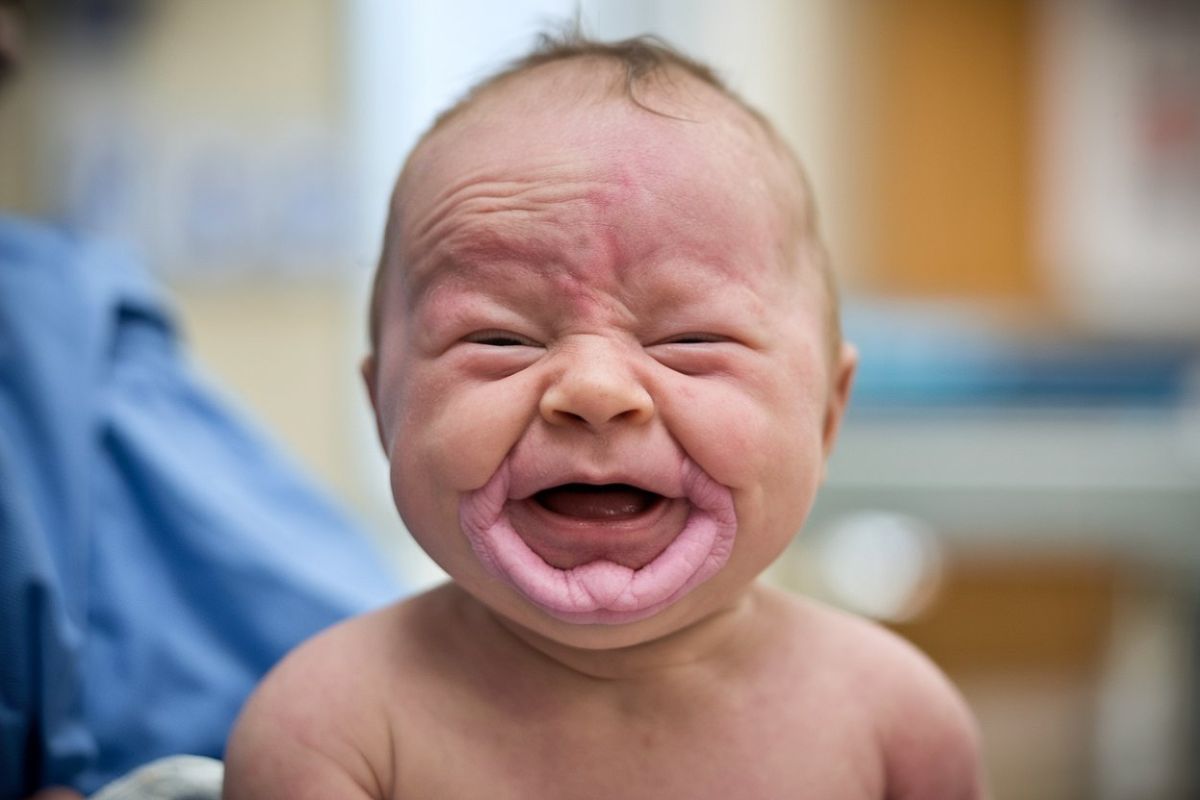
What is Möbius Syndrome? Möbius Syndrome is a rare congenital disorder that affects facial muscles and eye movement. Named after German neurologist Paul Julius Möbius, who first described it in 1888, this condition impacts approximately 1 in 50,000 births. The primary symptoms include facial paralysis and the inability to move the eyes from side to side. Individuals with Möbius Syndrome often have a "mask-like" facial appearance due to the lack of facial expression muscles. This condition can also be associated with other congenital deformities like clubfoot and pectoral muscle hypoplasia. Despite its challenges, many with Möbius Syndrome lead fulfilling lives with proper support and management.
Key Takeaways:
- Möbius Syndrome is a rare neurological disorder affecting facial muscles and eye movement. It can lead to facial paralysis and difficulty moving the eyes side to side, impacting daily life and social interactions.
- While there is no cure for Möbius Syndrome, treatments like physical therapy and speech therapy can help manage symptoms and improve quality of life. Many individuals with the condition lead normal lives, finding ways to adapt and convey emotion.
Understanding Möbius Syndrome
Möbius syndrome is a rare congenital neurological disorder that affects facial muscles and eye movement. Named after German neurologist Paul Julius Möbius, who first described it in 1888, this condition impacts approximately 1 in 50,000 births. Let's dive into some key facts about this intriguing syndrome.
-
Definition: Möbius syndrome is defined by congenital facial palsy and abnormal ocular abduction due to the underdevelopment of the 6th and 7th cranial nerves.
-
Incidence: This syndrome occurs in about 0.3 per 100,000 live births, making it quite rare.
-
Etiology: The exact cause remains unknown, but it likely involves a mix of genetic and environmental factors.
-
Symptoms: Key symptoms include bilateral facial paralysis and difficulty moving the eyes side to side.
Facial and Physical Characteristics
The physical manifestations of Möbius syndrome are often the most noticeable. These characteristics can affect daily life and social interactions.
-
Facial Appearance: Individuals often have a "mask-like" face due to the lack of facial muscle movement.
-
Associated Deformities: Common deformities include clubfoot, brachial deformities, and pectoral muscle hypoplasia.
-
Poland Sequence: About 15% of patients also have Poland sequence, which includes hand malformations and missing pectoral muscles.
-
Cranial Nerve Involvement: The 6th and 7th cranial nerves are primarily affected, leading to facial paralysis and limited eye movement.
Diagnosis and Clinical Presentation
Diagnosing Möbius syndrome involves clinical criteria and sometimes additional tests to rule out other conditions.
-
Diagnosis: Typically based on clinical signs like congenital facial weakness and limited eye abduction.
-
Diagnostic Procedures: Tests like electromyography and imaging studies may be used to exclude other conditions.
-
Clinical Presentation: Bilateral facial immobility is often noticed soon after birth, along with incomplete eyelid closure and difficulty sucking.
Developmental and Social Impact
Möbius syndrome can affect motor skills, speech development, and social interactions, but many individuals find ways to adapt.
-
Motor Delay: Many children experience motor delays that usually improve after the first few years.
-
Speech Development: Speech may be delayed due to paralysis of facial muscles, but therapy can help.
-
Intelligence: Most individuals have normal intelligence, though mild mental retardation occurs in about 10-15% of cases.
-
Associated Conditions: Autistic behavior is present in 30-40% of children and young adults with Möbius syndrome.
-
Social and Lifestyle Effects: The inability to form facial expressions can lead to misunderstandings in social interactions.
Treatment and Management
While there is no cure for Möbius syndrome, various treatments can help manage symptoms and improve quality of life.
-
Treatment: Supportive care includes feeding tubes, physical therapy, and speech therapy.
-
Eye Care: Frequent lubrication with eye drops helps prevent corneal erosion due to difficulty blinking.
-
Feeding Problems: Special feeding techniques or appliances may be needed due to associated micrognathia.
-
Respiratory Issues: Severe cases may involve respiratory problems, requiring early intervention.
Life Expectancy and Mortality
Understanding the long-term outlook for individuals with Möbius syndrome can help in planning care and support.
-
Life Expectancy: Generally normal, though severe cases with significant brainstem involvement can lead to early death.
-
Mortality Rate: A British study found that 8 out of 29 patients died shortly after birth due to respiratory or bulbar issues.
Associated Deformities and Complications
Möbius syndrome often comes with other congenital deformities and complications that require careful management.
-
Associated Deformities: Common issues include clubfoot, brachial deformities, and pectoral muscle hypoplasia.
-
Ophthalmological Manifestations: Eye abduction limitation is a hallmark symptom, along with other eye issues like esotropia and epicanthus.
Genetic and Environmental Factors
Research continues to explore the genetic and environmental factors that may contribute to Möbius syndrome.
-
Genetic Factors: Multiple genetic factors are likely involved, with some studies suggesting a link to disruptions in the subclavian artery during development.
-
Environmental Factors: Maternal use of abortion inducers during the first trimester has been associated with an increased risk.
Differential Diagnoses and Support
Differentiating Möbius syndrome from other conditions and providing support to affected individuals and their families is crucial.
-
Differential Diagnoses: Conditions like Duane syndrome and congenital facial diplegia can be confused with Möbius syndrome.
-
Supportive Care: Parental education about airway compromise and the possible need for tracheotomy is essential.
-
Patient Support Groups: Organizations like the Möbius Syndrome Foundation offer information and support to affected individuals and their families.
Research and Awareness
Ongoing research and increased awareness are vital for improving diagnosis and treatment options for Möbius syndrome.
-
Research and Awareness: Studies aim to understand clinical features, diagnosis, and management. The first Möbius Syndrome Scientific Conference in 2007 set minimum diagnostic criteria.
-
Ophthalmologic Manifestations: A study in Mexico reviewed clinical charts and found a wide range of eye-related issues in patients.
-
Prevalence in Different Populations: Prevalence varies, with a Dutch study finding 0.002% in 1996 and a recent survey showing 0.3 per 100,000 live births.
-
Age of Diagnosis: The average age of diagnosis has decreased from 3.4 years to 2.2 years since the introduction of minimum diagnostic criteria.
Complications and Quality of Life
Managing complications and improving quality of life are key goals for individuals with Möbius syndrome.
-
Complications and Management: Issues like poor nutrition, dysphagia, and corneal ulceration require supportive care and therapy.
-
Quality of Life: Many individuals lead normal lives, using body language and vocal tone to convey emotion despite their condition.
Understanding Möbius Syndrome
Möbius syndrome, a rare congenital disorder, affects about 1 in 50,000 births. Characterized by facial paralysis and eye movement limitations, it stems from issues with the 6th and 7th cranial nerves. Symptoms include a mask-like facial appearance, difficulty with eye movements, and sometimes other congenital deformities like clubfoot or Poland sequence. Diagnosis relies on clinical criteria, and while there's no cure, supportive treatments like speech therapy, physical therapy, and eye care can improve quality of life. Despite challenges, individuals with Möbius syndrome often lead normal lives, using body language and vocal tone to express emotions. Early diagnosis and intervention are crucial for better outcomes. The Möbius Syndrome Foundation offers support and promotes research, aiming to enhance understanding and management of this condition. With proper care, those affected can achieve personal and professional success.
Frequently Asked Questions
Was this page helpful?
Our commitment to delivering trustworthy and engaging content is at the heart of what we do. Each fact on our site is contributed by real users like you, bringing a wealth of diverse insights and information. To ensure the highest standards of accuracy and reliability, our dedicated editors meticulously review each submission. This process guarantees that the facts we share are not only fascinating but also credible. Trust in our commitment to quality and authenticity as you explore and learn with us.


